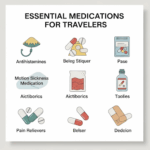Human papillomavirus, commonly known as HPV, is often associated with cervical cancer and other health concerns. This article aims to demystify HPV infections by addressing common fears, explaining its transmission, potential health risks, and modern prevention strategies.
What is HPV?
HPV is a group of more than 200 related viruses, with at least 14 considered high-risk for causing cancer. The virus is so prevalent that most sexually active individuals will contract it at some point in their lives. HPV is primarily transmitted through intimate skin-to-skin contact.
Health Implications of HPV
While many HPV infections resolve spontaneously without causing any issues, certain strains can lead to serious health problems. High-risk HPVs are responsible for nearly all cases of cervical cancer and can also cause other cancers such as anal, oropharyngeal, and penile cancers. Low-risk HPVs can cause genital warts and respiratory papillomatosis.
Preventing HPV Infections
Vaccination is the most effective method of preventing HPV infections and their associated diseases. The HPV vaccine is recommended for preteens aged 11 to 12, but can be administered starting at age 9 and up to age 26. The vaccine covers the most common cancer-causing HPV types.
In addition to vaccination, regular screening for cervical cancer through Pap smears and HPV tests for women is crucial. Safe sexual practices, including the use of condoms, can also reduce the risk of HPV transmission.
Dispelling Myths About HPV
There are several misconceptions about HPV that contribute to unnecessary fear and stigma. For instance, some believe that HPV only affects women, but men are equally at risk of contracting the virus and developing related health issues. Another common myth is that HPV only affects individuals with multiple sexual partners, whereas in reality, anyone who is sexually active can be at risk.
Conclusion
Understanding the nature of HPV and the available preventive measures can significantly reduce the risk of infection and its potential complications. Public health education and vaccination efforts are key to controlling the spread of HPV and protecting public health. Addressing misconceptions and promoting accurate information will empower individuals to make informed health decisions.

